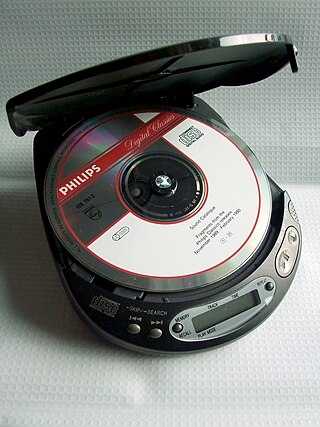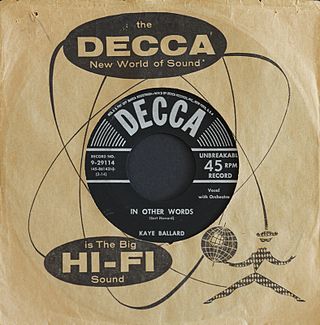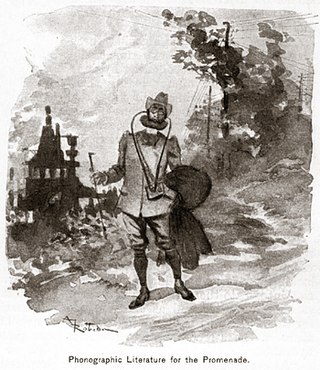
Apollo 11 was the American spaceflight that first landed humans on the Moon. Commander Neil Armstrong and Lunar Module Pilot Buzz Aldrin landed the Apollo Lunar Module Eagle on July 20, 1969, at 20:17 UTC, and Armstrong became the first person to step onto the Moon's surface six hours and 39 minutes later, on July 21 at 02:56 UTC. Aldrin joined him 19 minutes later, and they spent about two and a quarter hours together exploring the site they had named Tranquility Base upon landing. Armstrong and Aldrin collected 47.5 pounds (21.5 kg) of lunar material to bring back to Earth as pilot Michael Collins flew the Command Module Columbia in lunar orbit, and were on the Moon's surface for 21 hours, 36 minutes before lifting off to rejoin Columbia.

Apollo 9 was the third human spaceflight in NASA's Apollo program. Flown in low Earth orbit, it was the second crewed Apollo mission that the United States launched via a Saturn V rocket, and was the first flight of the full Apollo spacecraft: the command and service module (CSM) with the Lunar Module (LM). The mission was flown to qualify the LM for lunar orbit operations in preparation for the first Moon landing by demonstrating its descent and ascent propulsion systems, showing that its crew could fly it independently, then rendezvous and dock with the CSM again, as would be required for the first crewed lunar landing. Other objectives of the flight included firing the LM descent engine to propel the spacecraft stack as a backup mode, and use of the portable life support system backpack outside the LM cabin.

Walkman, stylised as WALKMAN (ウォークマン), is a brand of portable audio players manufactured and marketed by Japanese company Sony since 1979. The original Walkman started out as a portable cassette player and the brand was later extended to serve most of Sony's portable audio devices; since 2011 it consists exclusively of digital flash memory players. The current flagship product as of 2022 is the WM1ZM2 player.

Compact Disc Digital Audio, also known as Digital Audio Compact Disc or simply as Audio CD, is the standard format for audio compact discs. The standard is defined in the Red Book, one of a series of Rainbow Books that contain the technical specifications for all CD formats.

MiniDisc (MD) is an erasable magneto-optical disc-based data storage format offering a capacity of 60, 74, and later, 80 minutes of digitized audio.

The Compact Cassette, also commonly called a cassette tape, audio cassette, or simply tape or cassette, is an analog magnetic tape recording format for audio recording and playback. Invented by Lou Ottens and his team at the Dutch company Philips and released in August 1963, Compact Cassettes come in two forms, either containing content as a prerecorded cassette (Musicassette), or as a fully recordable "blank" cassette. Both forms have two sides and are reversible by the user. Although other tape cassette formats have also existed—for example the Microcassette—the generic term cassette tape is normally used to refer to the Compact Cassette because of its ubiquity.

Digital Audio Tape is a signal recording and playback medium developed by Sony and introduced in 1987. In appearance it is similar to a Compact Cassette, using 3.81 mm / 0.15" magnetic tape enclosed in a protective shell, but is roughly half the size at 73 mm × 54 mm × 10.5 mm. The recording is digital rather than analog. DAT can record at sampling rates equal to, as well as higher and lower than a CD at 16 bits quantization. If a comparable digital source is copied without returning to the analogue domain, then the DAT will produce an exact clone, unlike other digital media such as Digital Compact Cassette or non-Hi-MD MiniDisc, both of which use a lossy data-reduction system.
A cassette deck is a type of tape machine for playing and recording audio cassettes that does not have a built-in power amplifier or speakers, and serves primarily as a transport. It can be a part of an automotive entertainment system, a part of a portable mini system or a part of a home component system. In the latter case it is also called a component cassette deck or just a component deck.

A CD player is an electronic device that plays audio compact discs, which are a digital optical disc data storage format. CD players were first sold to consumers in 1982. CDs typically contain recordings of audio material such as music or audiobooks. CD players may be part of home stereo systems, car audio systems, personal computers, or portable CD players such as CD boomboxes. Most CD players produce an output signal via a headphone jack or RCA jacks. To use a CD player in a home stereo system, the user connects an RCA cable from the RCA jacks to a hi-fi and loudspeakers for listening to music. To listen to music using a CD player with a headphone output jack, the user plugs headphones or earphones into the headphone jack.

An album is a collection of audio recordings issued on a medium such as compact disc (CD), vinyl (record), audio tape, or digital. Albums of recorded sound were developed in the early 20th century as individual 78 rpm records collected in a bound book resembling a photo album; this format evolved after 1948 into single vinyl long-playing (LP) records played at 33+1⁄3 rpm.

"Fly Me to the Moon", originally titled "In Other Words", is a song written in 1954 by Bart Howard. The first recording of the song was made in 1954 by Kaye Ballard. Frank Sinatra's 1964 version was closely associated with the Apollo missions to the Moon.

The Stereobelt was a personal stereo player devised by Andreas Pavel, a former television executive and book editor. Pavel filed a patent of invention for his portable music player in Italy in 1977, and adopted the same protective steps in Germany, United Kingdom, United States, and Japan. He sought royalty fees and later commenced legal proceedings against Sony Corporation after the Walkman released commercially in 1979, believing the electronics manufacturer had infringed his intellectual property. Judges ruled against him, revoking the patent, stating his concept was "not significantly inventive".

A portable audio player is a personal mobile device that allows the user to listen to recorded audio while mobile. Sometimes a distinction is made between a portable player, battery-powered and with one or more small loudspeakers, and a personal player, listened to with earphones.

Discman was Sony's brand name for portable CD players. The first Discman, the Sony D-50 or D-5, was launched in 1984. The brand name changed to CD Walkman, initially for Japanese lineups launched between October 1997 and March 1998, and then entirely in 2000. Discman and CD Walkman players are no longer produced.
The history of Sony, a Japanese multinational conglomerate, dates back to 1946.

A mixtape is a compilation of music, typically from multiple sources, recorded onto a medium. With origins in the 1980s, the term normally describes a homemade compilation of music onto a cassette tape, CD, or digital playlist. The songs are either ordered sequentially or made into a continuous programme by beatmatching the songs and creating seamless transitions at their beginnings and endings with fades or abrupt edits. Essayist Geoffrey O'Brien described this definition of the mixtape as "perhaps the most widely practiced American art form".

Music Out of the Moon: Music Unusual Featuring the Theremin - Themes by Harry Revel is an album consisting of six songs on three 10-inch, 78 rpm records by bandleader Les Baxter and composer Harry Revel with theremin player Dr. Samuel J. Hoffman released on Capitol in April 1947. Music Out of the Moon is considered the best-selling theremin record of all time.
Personics was the company that invented the music recording retail system with trade name "Personics System" that was introduced in record stores starting in 1987. The system allowed customers to enter a music store, use headphones to preview and select individual songs on a console, then specify a custom list of songs to be recorded to a Compact Cassette tape. The songs available were also listed in magazine format available at the stores. The record stores had a machine from Personics that contained 120 custom Compact discs recorded in CD Digital Audio Redbook format with custom Dolby AC1 (DP85) tracks which were also pre-encoded with Dolby B Type Noise reduction prior to compression. These two drives each had jukebox disc changing systems and provided access to thousands of songs for fast in-shell cassette recording.

Music in space is music played in or broadcast from a spacecraft in outer space. The first ever song that was performed in space was a Ukrainian song “Watching the sky...”(“Дивлюсь я на небо”) sang on 12 August 1962 by Pavlo Popovych, cosmonaut from Ukraine at a special request of Serhiy Korolyov, Soviet rocket engineer and spacecraft designer from Ukraine. According to the Smithsonian Institution, the first musical instruments played in outer space were an 8-note Hohner "Little Lady" harmonica and a handful of small bells carried by American astronauts Wally Schirra and Thomas P. Stafford aboard Gemini 6A. Upon achieving a space rendezvous in Earth orbit with their sister ship Gemini 7 in December 1965, Schirra and Stafford played a rendition of "Jingle Bells" over the radio after jokingly claiming to have seen an unidentified flying object piloted by Santa Claus. The instruments had been smuggled on-board without NASA's knowledge, leading Mission Control director Elliot See to exclaim "You're too much" to Schirra after the song. The harmonica was donated to the Smithsonian by Schirra in 1967, with his note that it "...plays quite well".
















